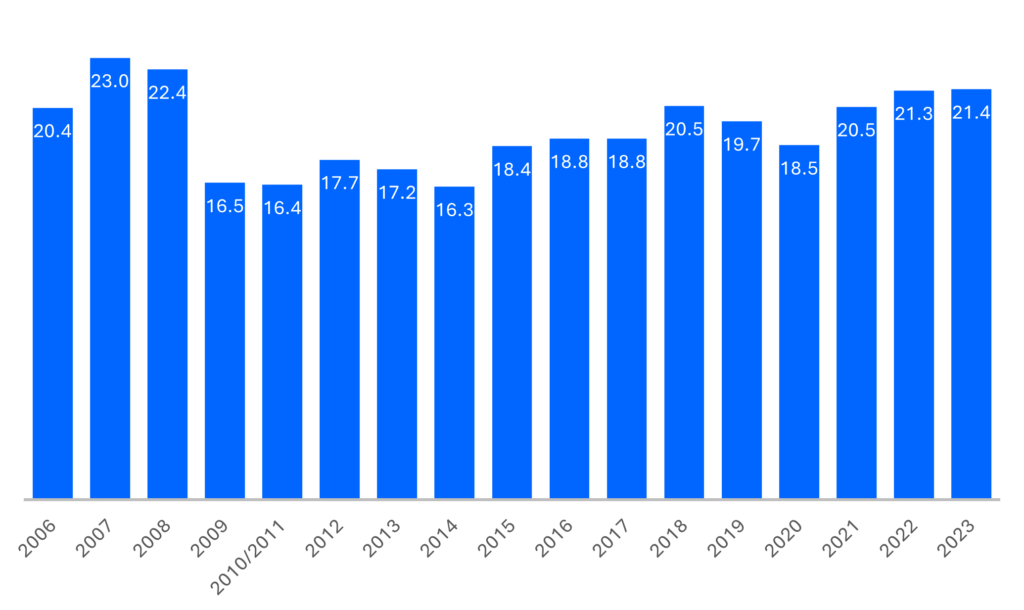2024 New Zealand Staff Turnover Survey Report
The 2024 New Zealand Staff Turnover report was released in April

National Staff Turnover surprisingly steady
National staff turnover remained relatively steady through 2022 and 2023 however the underlying data shows a very different story.
New Zealand’s National Staff turnover rate confirms surprising stability, with rates increasing from 20.5% to 21.3% in 2022 and again slightly increasing to 21.4% in 2023.
The labour market continues to adapt to post-pandemic realities. The data from the past years explains a complex and evolving story of the New Zealand’s workforce, indicating that both employers and employees need to remain agile and responsive to the fast-changing economic and industrial landscape.
% NZ Staff Turnover 2007 to 2023

You can find out more about the survey here
You can purchase the latest survey report here
2022-2023 – Economic Tightening and Its Effects
The anticipation of increased turnover was supported by actual trends in 2022, as Voluntary turnover continued to rise, and Involuntary turnover decreased—a pattern atypical of tightening economic conditions.
However, by 2023, with the economy further slowing, the typical pattern resumed with a sharp 74% rise in involuntary turnover (from 2.3% to 4.0%) and a moderate 10.3% reduction in voluntary turnover (from 19.4% to 17.4%).
This significant involuntary turnover spike can be attributed to various factors.
- Economic Conditions and Recession: Economic downturns have directly increased involuntary turnover due to industry downsizing and layoffs.
- Regulatory and Policy Changes: Shifts in government policies and reduced spending have also played a crucial role in shaping turnover rates.
- Technological Advancements: Automation and technological advances have led to redundancies in sectors susceptible to automation like manufacturing, influencing involuntary turnover.
- Post-Pandemic Adjustments: The shift towards remote work and subsequent organisational restructuring have delayed but not eliminated the impacts on workforce dynamics.
- Workforce Demographics: The aging population and the changing expectations of younger workers have also significantly influenced turnover patterns.
The less dramatic reduction in voluntary turnover in part can be attributed to.
- The slower opening of our boarders and the continuing demand for skills. This gave employees continued confidence to look at new job opportunities and the hope of obtaining higher salaries as the impact of high inflation and the increases in the cost of living took hold.
- The increased exit of employees from New Zealand, many heading off on their Covid-delayed overseas experience (OE) and others looking for higher salaries and better opportunities in Australia and beyond.
- Economic Conditions: Economic downturns directly impact voluntary turnover as employees become more cautious about moving positions.
Read more about Staff Turnover and Retention
